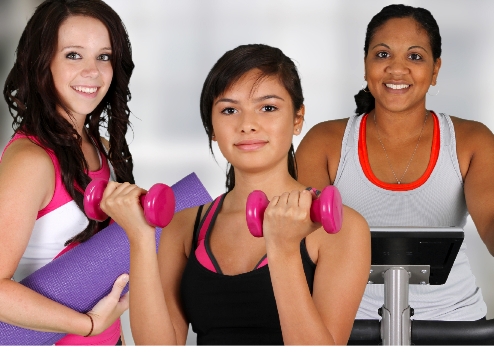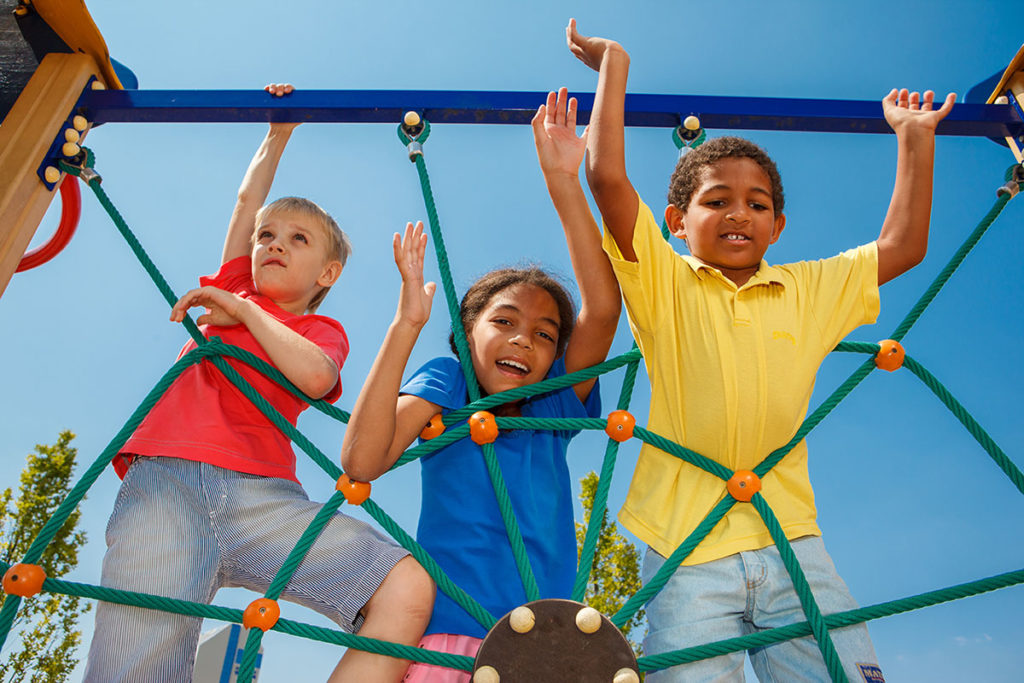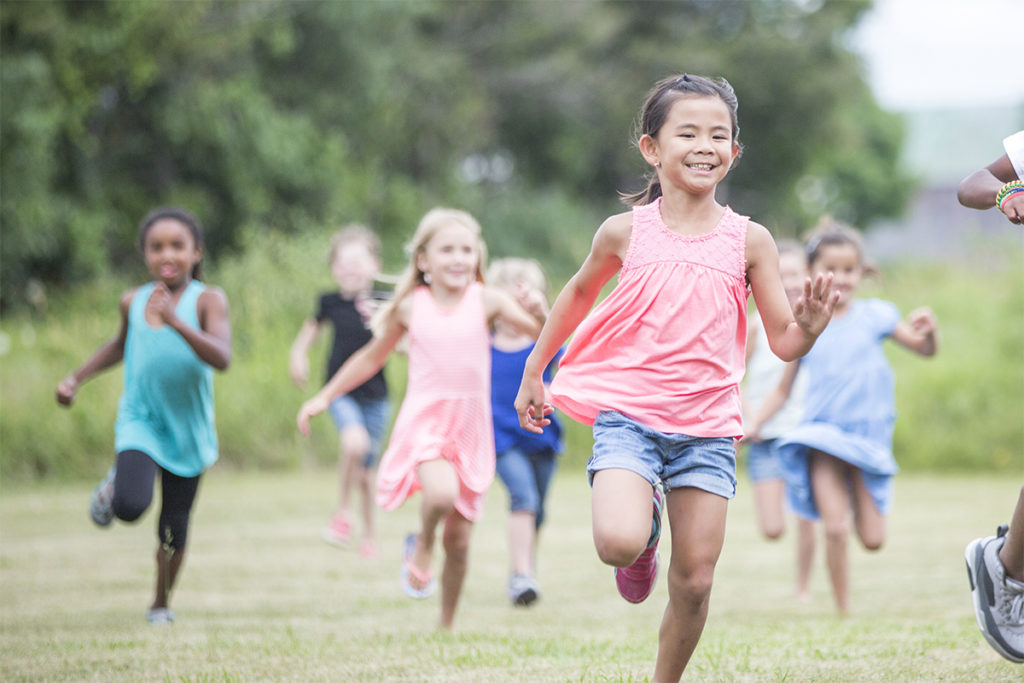5 Tips for Teaching Teens
Help the teenaged population start adulthood on the right foot.

As the group fitness industry grows, so does its target audience. Now more than ever, teens (aged 13–19) are attending group classes. They’re popping into their moms’ yoga and Pilates sessions, shaking their bodies in Zumba® and adding strength training classes to their summer days. Some fitness facilities even offer teen-specific classes, work with local school physical education programs or teach specialty cross-training classes for youth sports groups.
To design safe, successful workouts for teens, it’s vital that group exercise instructors understand this age group. Teens are no longer children but are not quite adults; they’re a unique population. Adolescence is a time of great growth and development—physically, emotionally and mentally.
Instructors are often hesitant and even annoyed when teens try to participate in a class. They can be silly, loud, awkward or even belligerent. But rather than fear this sometimes misunderstood population, you want to enthusiastically welcome its members, help them adopt a healthy lifestyle and show them just how fun and rewarding fitness can be. Draw from the following five tips to inspire teens to fitness.
1. Understand Their Cognitive Abilities
According to the American Psychological Association, teens may be emotionally immature, but they have reached cognitive maturity by age 16 (Steinberg et al. 2009). By then they have developed reasoning skills, logical thinking, metacognition (thinking about their thinking) and abstract thinking (Huebner 2012). Don’t talk down to teens; instead, ensure that exercises make sense to them. Teach them about the muscles being worked; instruct them on safe and proper form; demonstrate equipment use; and provide general guidelines for healthier living.
Be aware that many teenagers have a short attention span. Create variety to keep them excited and engaged. Circuits, boot camps, strength training and partner yoga are great choices for teens. While technology can partly be blamed for their short attention spans, it’s also a great skill to harness. Utilize teens’ technological savviness by recommending fitness and nutrition apps.
Teach one element of movement at a time. Start with basic choreography before adding complex directional changes or arm movements. Teach teens how fitness translates into their everyday movements.
Since adolescents are beginning to recognize their independence, there is no better time to inspire them to adopt new and healthier habits, even if unhealthy habits are being modeled in their homes. When you understand the cognitive abilities of teens, you can communicate with them appropriately and they’ll feel respected and understood.
2. Cater to Their Physical Abilities
Recognize that teens come in all shapes and sizes and reach their height peaks at different ages. Some adolescents may be too short for traditional indoor cycling bikes and weight room machines. Make sure the equipment you choose (step benches, stability balls and bikes) fits all participants.
Many teens may be out of shape because they have been living a sedentary lifestyle (Lawrenson 2010). Explain the rating-of-perceived-exertion scale and teach them how to listen to their bodies. At the same time, encourage them to get their heart rates up to high, but safe, levels. Many teen participants may spend much of their time online or playing video games, and cardiovascular activity may intimidate them. Provide a variety of movements to help all teens feel successful, whether they’re athletic, dance-inclined, musical or skilled at games. Each teen needs to feel that some aspect of fitness suits him or her.
Ask teenagers what sports or other physical activities they’re involved in and use this feedback to include exercises that will strengthen and train them. Select and teach the best stretches for them as well. Soccer players, for example, tend to have tight quadriceps, while track stars tend to have tight hip rotators. Dancers and cheerleaders usually have incredible passive hamstring flexibility but may lack active flexibility and strength. By addressing individual needs, you help youth perform better, compete better and feel better. You also make an invaluable connection with them when they feel that you care about their outside lives and interests.
3. Promote the Positive
Adolescence is a time of self-discovery, but with that can come periods of great doubt. Recognize that teens need to feel accepted and are still heavily swayed by peers. While some teens are outgoing and playful and will enjoy a group fitness class, others are shy and insecure and will feel all eyes are on them when they move.
It’s vital to make sure fitness is not humiliating for teens, who may be very self-conscious or embarrassed about sweating or breathing heavily. Modify your choreography, select exercises that are less intimidating, or provide plenty of choices. Rather than commanding everyone to do 30 push-ups, encourage participants to count their own reps and record how many they can do that particular day. Remind them that the goal is to improve each week and not worry about how well others are doing. If you’re presenting dance-based choreography that makes teens stop and giggle nervously, teach an optional movement that is more athletic or martial-arts-based.
On the other hand, be patient and keep presenting the same exercises. Sometimes it takes a few classes before teens will fully participate. Give them the option of watching a portion of the workout first; then invite them to join you. Never punish or verbally harass teens for not following along with you. Praise them for the exercises they perform correctly. Cheer them on as they complete their reps. Smile as they pick up on the choreography. Allow successful participants to partner up and work with those who are struggling or are especially shy.
Most important, focus on how exercise will make them feel rather than on how it can make them look. Don’t promote negative body image issues, however unintentionally. Rather than emphasizing calories, fat or fitting into skinny jeans, focus on feeling stronger, living a healthier life, having fun and performing better.
4. Have a Sense of Humor
Ask teens what their favorite class in school is, and their answers will be based more on the teacher rather than the subject. A teacher who clearly enjoys her students, attempts to understand them and approaches them with a sense of humor is loved and respected. Adopt these traits and teach teens that you can laugh at yourself while working out, that fitness is fun and you don’t have to perform every exercise perfectly to have a great class experience and reap benefits.
Remember that teens (and hopefully most adults) are still part-child, so be playful. Incorporate games—such as rolling a large die—to determine exercise reps. Do partner work with tubing or medicine balls. Change the class setup from typical rows to a giant circle. High-five class members after they complete a challenging sequence, or have each participant create his or her unique “happy dance” to celebrate completing a difficult set. Encourage teens to cheer for one another during dreaded walking lunges or plank holds. If teens see you smiling, laughing and having fun—despite the challenge of a hard workout—they will learn that they, too, can enjoy activities that are physically demanding. Being playful will also awaken the child within you.
Give teens the benefit of the doubt. Rather than presuming that a group of giggling adolescents are laughing at you or being belligerent, recognize that they’re often just uncomfortable with their own skills or fitness level and are acting out inappropriately. Try to be lighthearted and patient. In the event that a teen truly is disrupting class, first use proximity (stand close to the offender) and a firm but kind correction. If the behavior continues, quietly ask the offending teen to sit in the hall or leave the class so that the other participants can enjoy their experience. Above all, don’t let a bad moment ruin the entire class experience for everyone else—jump right back in with a smile and positive energy.
5. Be a Role Model
Teens are discovering themselves and, in the process, they use adults around them as examples. Teens often have poor nutrition and exercise habits simply because it’s the only way of life they know. You may very well be the best example of healthy living they have.
Share some of your fitness accomplishments with them. When they hear about the marathon you ran or a triathlon you completed, they will recognize that they, too, may be able to achieve a similar goal. When you take the time to teach nutrition tips during class, they will understand that a fit body takes more than a few workouts each week and that healthy eating can be delicious and easy. When they see your energy and enthusiasm, they’ll realize that getting older does not mean getting weaker or frailer. They’ll recognize that if they adopt your habits, they, too, can enjoy life more. Encourage them to set realistic and attainable goals. Be available before and after class to answer their fitness and nutrition questions. Be someone they want to emulate!
By understanding teens’ cognitive and physical abilities, and by being a positive role model and having a sense of humor, you will be sure to please kids of any age and keep them coming back for more. Above all, you’ll inspire the next generation to embrace a fitter and healthier lifestyle.
Here are some tips to share with parents when they ask you how to get their teen off the couch and moving:
- Recognize the value of organized sports and be willing to pay for them. Seek out well-run programs with good coaches.
- Think outside the box with organized sports. If your teen doesn’t take to traditional ball sports, look into less obvious activities, such as fencing, break dancing, indoor rock climbing, Parkour, etc.
- When safe and feasible, encourage teens to walk or ride their bikes.
- Get active with teens. Train for a 5K together, go on weekend family hikes or work in the yard together.
- Limit daily computer or television time for all family members to 1–2 hours. Encourage active gaming, such as Just Dance® or Wii Sports®.
References




